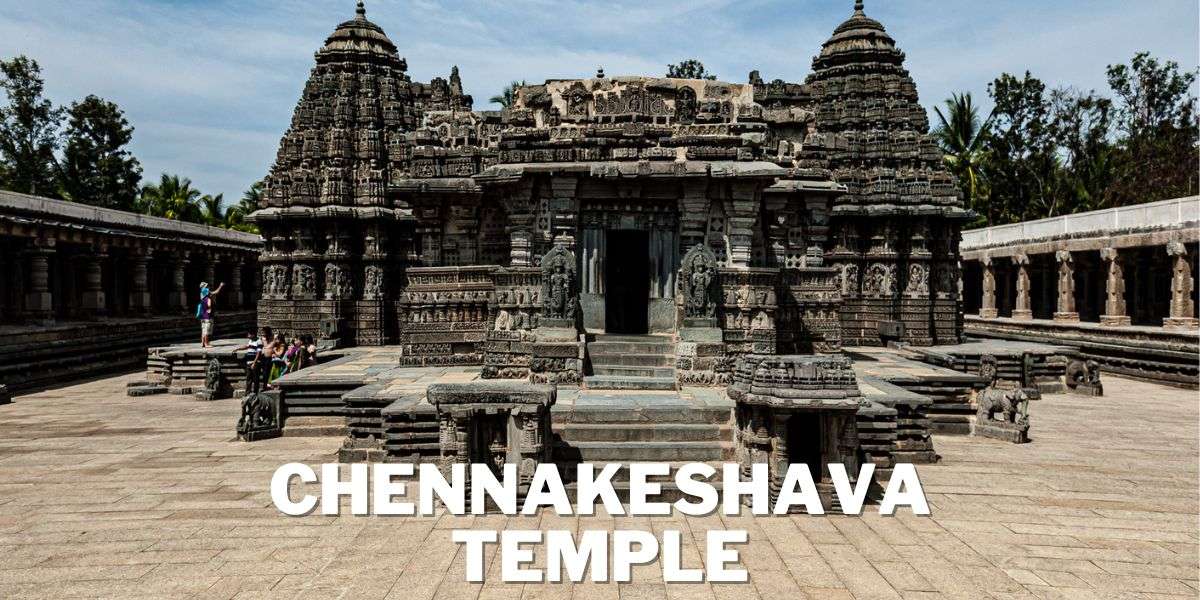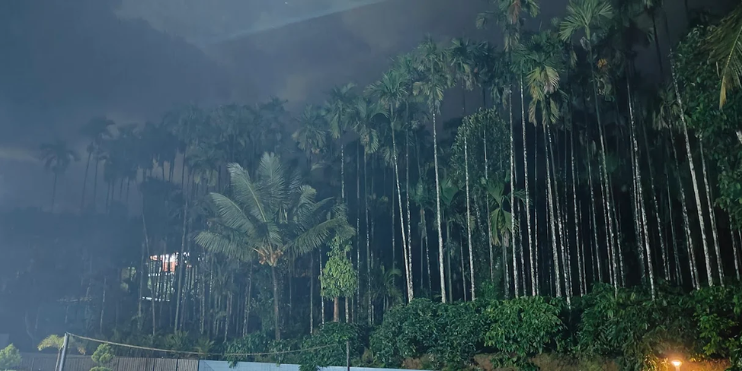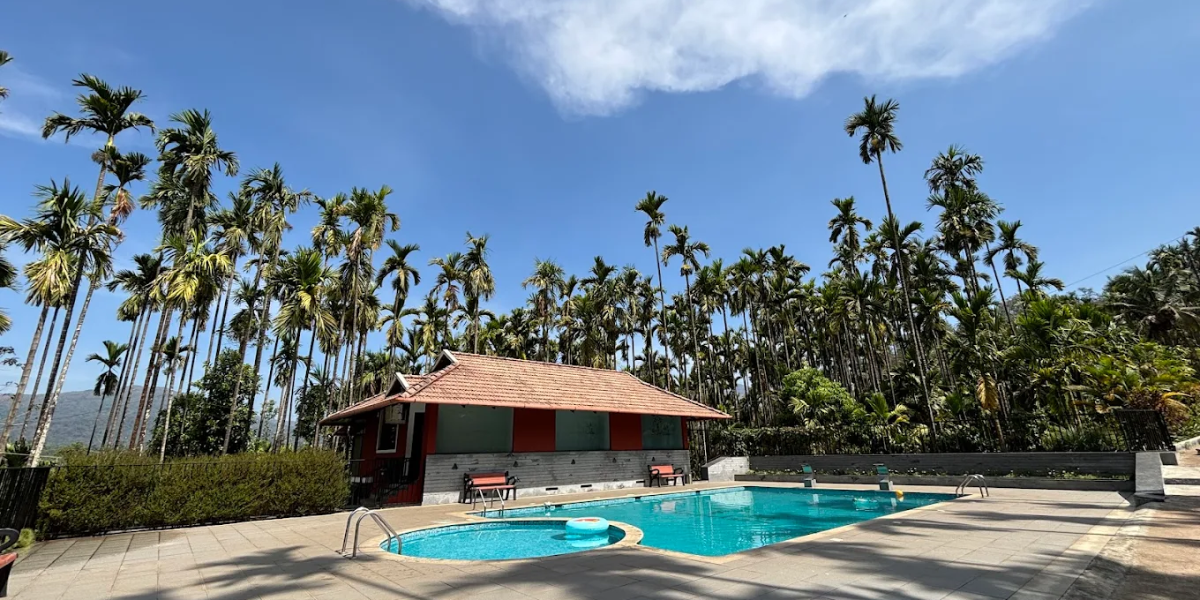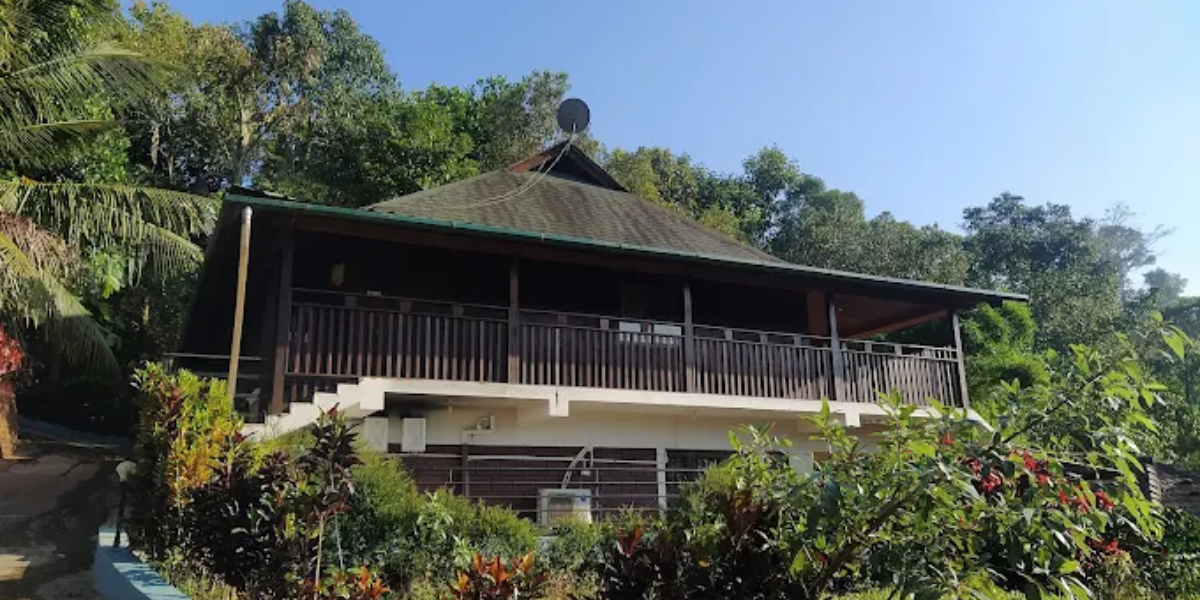The Chennakeshava Temple, located in Belur, Karnataka, is a testament to the Hoysala dynasty’s architectural brilliance and cultural richness. Commissioned in 1117 CE by King Vishnuvardhana, this temple is a splendid illustration of Hoysala architecture and a significant cultural landmark. The temple showcases the artistic prowess of its time and serves as an essential site for religious and cultural activities.
Historical Background Of Chennakeshava Temple
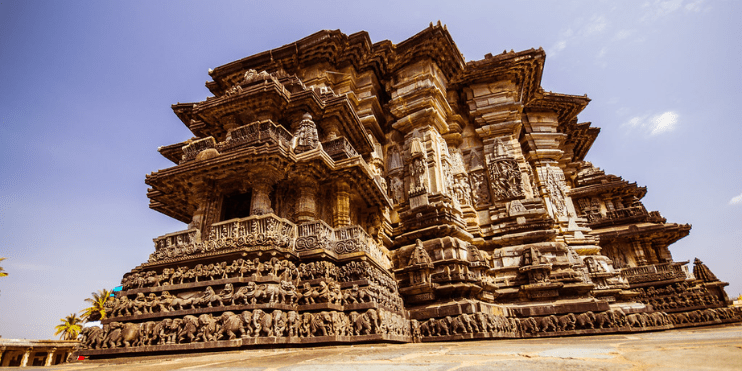
King Vishnuvardhana commissioned the temple to commemorate his victory over the Cholas. Construction began in 1117 CE and lasted over a century, involving contributions from successive rulers. The Hoysala empire, renowned for its patronage of art and architecture, saw the temple as a symbol of its power and devotion. Despite suffering damage during invasions, particularly by Malik Kafur in the 14th century, the Vijayanagara Empire restored and maintained the temple.
The temple complex continued to expand over 100 years with contributions from various rulers. Notable contributions include the construction of the Chennigaraya temple by Queen Shantaladevi and additional structures for the temple’s maintenance by Narasimha I and Ballala II. The Vijayanagara Empire added several new features, including granite pillars and a seven-story gopuram.
Chennakeshava Temple Architectural Marvel
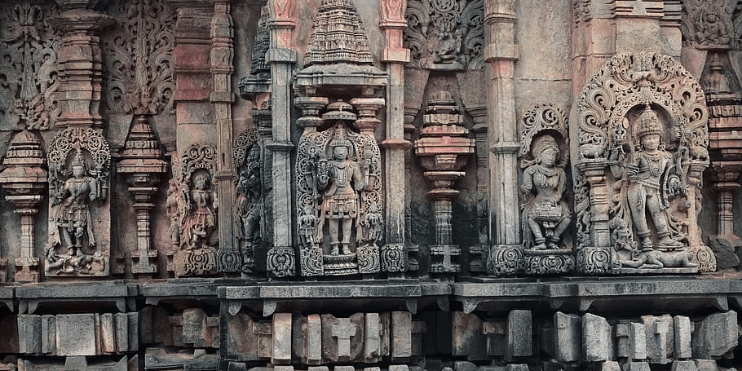
Hoysala architecture is characterized by its intricate details and star-shaped platforms. The Chennakeshava Temple is a prime example, featuring a complex design with a star-shaped foundation and exquisitely carved pillars. Among the 48 pillars, the Narasimha and Mohini pillars stand out for their detailed carvings and unique designs. The temple also houses the famous madanikas, or celestial damsels, celebrated for their artistic beauty.
The temple’s facade is adorned with numerous sculptures and friezes depicting scenes from Hindu epics like the Ramayana, Mahabharata, and Puranas. The temple’s doorways feature carvings of Hoysala kings, and the Makara Torana at the entrance showcases Vishnu’s avatars and other mythological scenes.
Artistic Excellence
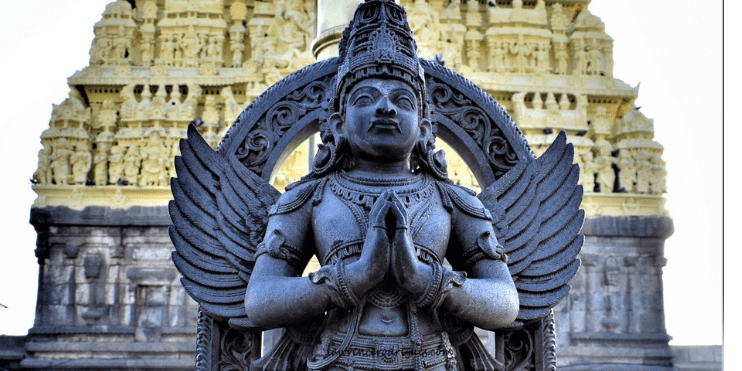
The temple’s walls and ceilings are decorated with sculptures illustrating scenes from Hindu epics such as the Ramayana, Mahabharata, and Puranas. These carvings not only depict mythological stories but also reflect the secular life of the 12th century, including dancers, musicians, and everyday activities. The temple uniquely incorporates elements from Shaivism, Shaktism, Jainism, and even Buddhism, showcasing a diverse religious influence.
The artistry is evident in the detailed carvings on the temple’s pillars and ceilings. The Navrang Mandapa, for example, features 48 intricately sculpted pillars, each with unique designs. The central ceiling of the mandapa is an inverted lotus, a common motif in Hoysala architecture.
Key Features of the Chennakeshava Temple
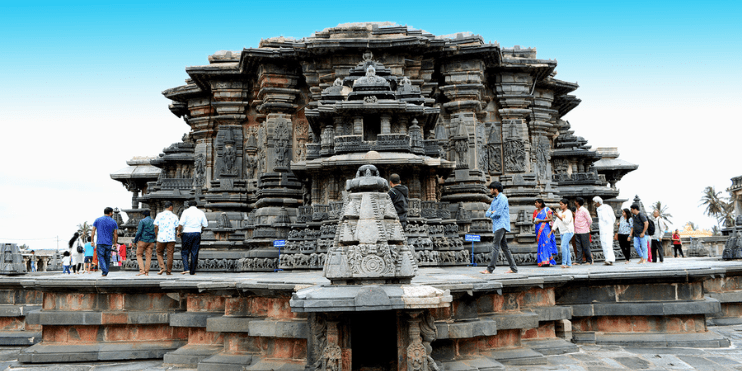
The main sanctum, or garbhagriha, enshrines the idol of Chennakeshava, a form of Lord Vishnu. The Navrang Mandapa, a large hall within the temple, is renowned for its richly sculpted pillars and perforated windows that allow light and air to flow through. The Makara Torana at the entrance, with carvings of Vishnu’s avatars and court scenes of Hoysala kings, adds to the temple’s grandeur. The golden Dhwajastambha and the beautifully carved doorways further enhance its architectural splendor.
The temple’s outer walls feature numerous sculptures depicting various deities, mythological scenes, and everyday life. These sculptures add to the temple’s beauty and record the period’s cultural and religious practices.
Cultural and Religious Significance
The Chennakeshava Temple is of immense religious significance, attracting pilgrims and tourists alike. It is a hub for enthusiastically celebrated festivals and events, including Kambala and Makar Sankranti. These celebrations add to the temple’s vibrant atmosphere and offer a glimpse into the local culture and traditions.
The temple is also an important site for the annual Vijayanagar Festival, which showcases traditional music, dance, and cultural performances. These events highlight the temple’s role as a center of cultural heritage and religious practice in the region.
How to Reach Chennakeshava Temple
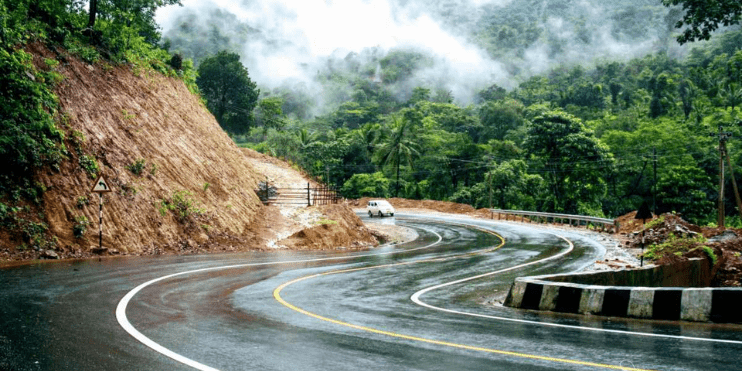
Reaching the Chennakeshava Temple is convenient due to its connectivity with major cities in Karnataka.
- By Air: Mangalore Airport (130 km away) and Bangalore International Airport (222 km away) are the nearest airports. The ideal mode of travel from the airport is by road.
- By Train: Chikmagalur (22 km away) and Hassan (32 km away) are the closest railway stations. Regular buses and taxis are available from these stations to Belur.
- By Road: Belur is well-connected by road to major cities in Karnataka. National Highway 75 (NH75) passes through Hassan, making it easily accessible from Bangalore, Mysore, and Mangalore.
Best Time to Visit Chennakeshava Temple
The best time to visit the Chennakeshava Temple is during the winter months, from November to February. The weather is pleasant and calm during this period, with daytime temperatures ranging from the low 20s to mid-30s Celsius (70s to low 90s Fahrenheit). The evenings are refreshingly cool, making it ideal for comfortably exploring the temple and its surroundings.
Visiting in winter allows you to avoid the intense summer heat, making sightseeing less tiring. Additionally, the monsoon season, from June to September, brings heavy rainfall that can hinder travel plans and make exploring the temple complex challenging.
Visiting Timing of Chennakeshava Temple
Visitors can access the Chennakeshava Temple every day from 7:30 AM to 7:30 PM. This allows ample time to explore the intricate architecture and detailed sculptures leisurely. The temple timings for the inner sanctum (darshan) are also from 7:30 AM to 7:30 PM without interruption.
Visiting early or late in the afternoon is advisable to avoid the midday crowd and experience the temple in a more serene and peaceful setting. Early mornings also provide better natural lighting for photography enthusiasts looking to capture the temple’s exquisite details.
Nearby Attractions of Chennakeshava Temple
The Chennakeshava Temple in Belur is a marvel of Hoysala architecture and a gateway to several other fascinating attractions in the region. Here are some must-visit places near the temple:
1.Halebidu (16 km)
Halebidu, the former capital of the Hoysala Empire, is renowned for the Hoysaleswara Temple, another masterpiece of Hoysala architecture.
This temple, dedicated to Lord Shiva, features intricate carvings and detailed sculptures that depict various Hindu deities, mythological stories, and scenes from daily life. The site also includes the Kedareswara Temple and numerous smaller shrines, making it a treasure trove for history and architecture enthusiasts.
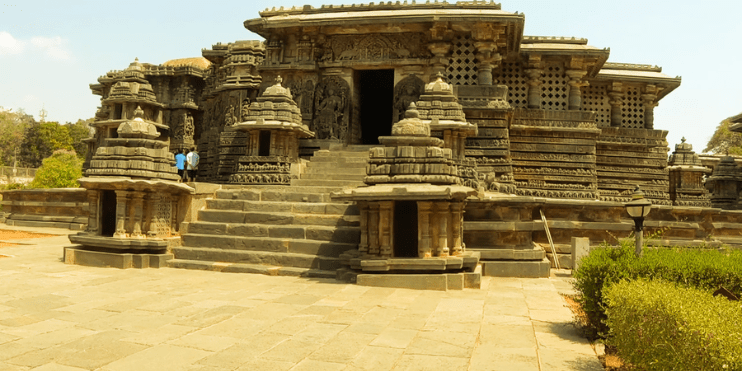
2.Yagachi Dam (3 km)
Located just a short distance from Belur, Yagachi Dam offers a scenic spot for relaxation and recreation. The dam is built across the Yagachi River and is surrounded by picturesque landscapes. Visitors can enjoy boating, kayaking, and other water sports, making it a perfect spot for a family outing or a picnic amidst nature.

3. Shravanabelagola (87 km)
Shravanabelagola is one of the most important Jain pilgrimage sites in India. It is renowned for its colossal monolithic statue of Gommateshwara Bahubali, standing 57 feet tall and considered one of the most giant free-standing statues globally. The site also includes several other Jain temples and monuments, offering a serene and spiritual experience.
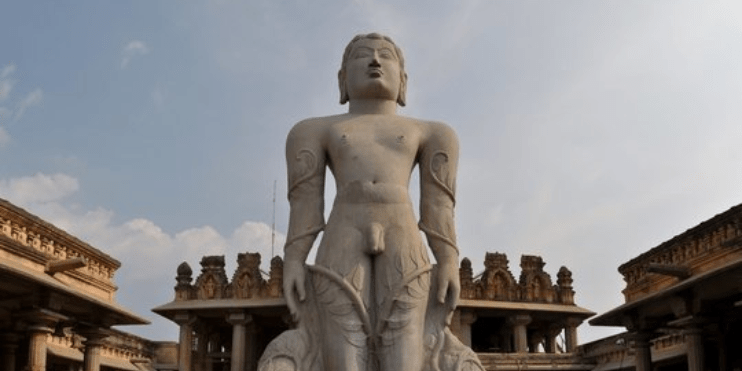
4. Chikmagalur (25 km)
Known for its coffee plantations and pleasant climate, Chikmagalur is a charming hill station near Belur. Visitors can explore coffee estates, enjoy scenic viewpoints, and visit temples such as the Kodanda Ramaswamy Temple and the Mullayanagiri Peak, the highest peak in Karnataka. The town also offers trekking opportunities and beautiful waterfalls like Hebbe Falls and Jhari Falls.
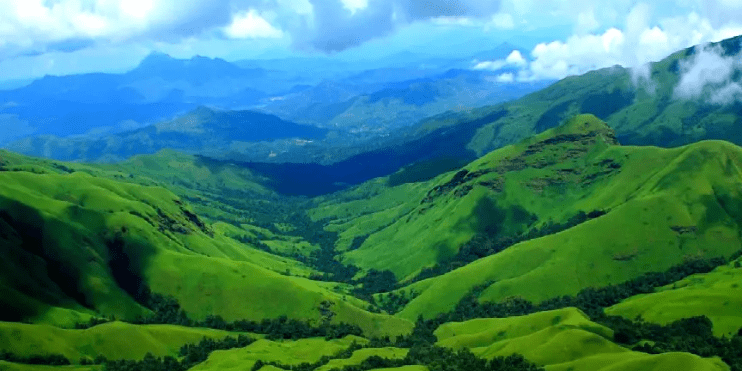
5. Belavadi (10 km)
Belavadi is home to the Veera Narayana Temple, another architectural gem from the Hoysala period. This temple, dedicated to Lord Vishnu, features exquisite sculptures and three shrines within a single complex. The tranquil village setting adds to the charm, making it a peaceful retreat for those interested in history and spirituality.
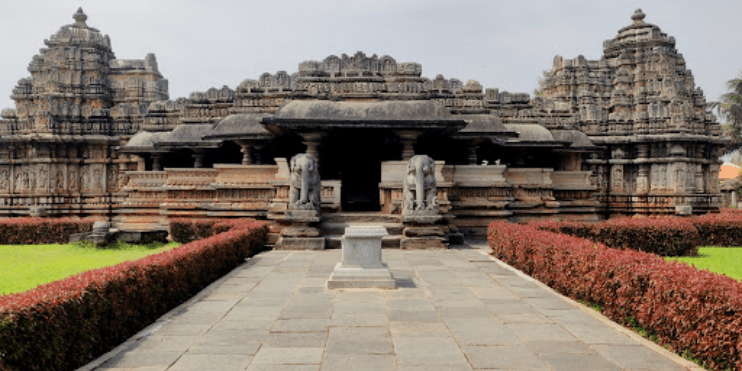
6. Hassan (38 km)
The city of Hassan, often used as a base to explore Belur and Halebidu, is known for its rich cultural heritage. Key attractions include the Shettihalli Rosary Church, an abandoned church partially submerged during the monsoon, and the Hasanamba Temple, which is dedicated to Goddess Hasanamba and is known for its unique rituals and architecture.
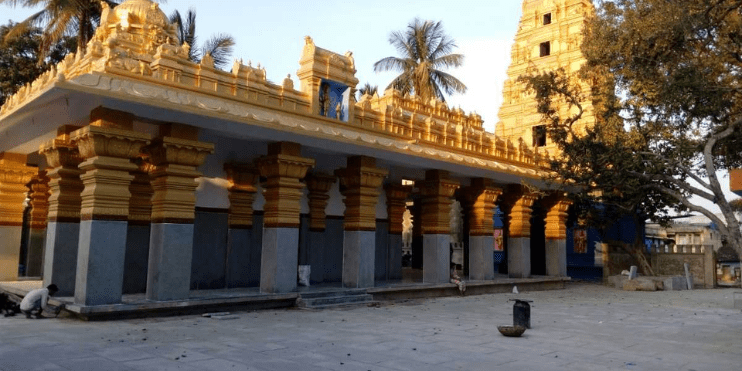
7. Bhadra Wildlife Sanctuary (60 km)
For nature and wildlife enthusiasts, the Bhadra Wildlife Sanctuary is a must-visit. Spread across the Western Ghats, the sanctuary is home to diverse flora and fauna, including tigers, leopards, elephants, and various bird species. The refuge offers safari tours, trekking trails, and bird-watching opportunities, providing a rich and immersive experience in the natural beauty of Karnataka.
These nearby attractions offer diverse experiences, from historical and architectural marvels to natural beauty and adventure activities. Each location provides a unique insight into the region’s cultural and natural heritage, and visiting the Chennakeshava Temple is an enriching and fulfilling journey.

Things to Do at Chennakeshava Temple
Visitors to the Chennakeshava Temple can participate in various activities to fully appreciate its beauty and significance.
- Explore the Sculptures: Spend time admiring the intricate carvings and sculptures that adorn the temple. Each pillar and wall tells a story through its detailed artwork.
- Photography: Capture the architectural beauty and details of the temple’s design. The temple offers numerous photo opportunities, from the grand entrance to the detailed carvings.
- Attend a Pooja: Participate in the daily rituals and poojas conducted at the temple for a spiritual experience. The temple’s serene atmosphere adds to the sense of devotion.
- Guided Tours: Hire a local guide to learn about the history and significance of various sculptures and architectural elements. A guided tour can provide deeper insights into the temple’s art and history.
Major Festivals of Chennakeshava Temple
The Chennakeshava Temple is the center of several significant festivals that draw visitors from far and wide:
- Vijayanagar Festival: Celebrated with great enthusiasm, this festival showcases cultural performances, traditional music, and dance, highlighting the region’s rich heritage.
- Kambala: A traditional buffalo race held in January, adding a vibrant touch to the temple festivities. This unique event is a significant cultural experience.
- Makar Sankranti: A January harvest festival celebrated with cultural activities and rituals, offering a glimpse into local customs and traditions.
Discover Bynekaadu: A Tranquil Escape Near Chennakeshava Temple
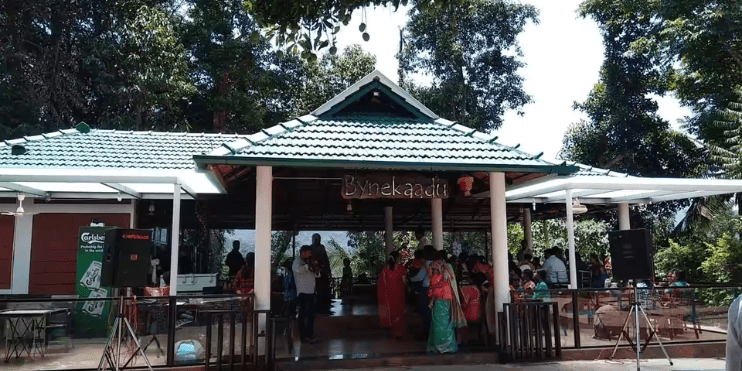
Just a short drive from the historic Chennakeshava Temple, Bynekaadu Resort offers a serene retreat amidst the lush landscapes of Karnataka. Nestled in nature, our resort is the perfect getaway for those looking to unwind after exploring the architectural marvels of Belur. At Bynekaadu, we provide a unique blend of comfort and adventure, with amenities catering to relaxation and outdoor activities.
Our cozy cottages and rooms are designed to provide a homely yet luxurious stay surrounded by the beauty of the Western Ghats. Whether you want to take a leisurely walk through our verdant gardens, enjoy a refreshing dip in our pool, or savor delicious local cuisine at our in-house restaurant, Bynekaadu has something for everyone.
Our resort offers a variety of activities for adventure enthusiasts, such as trekking, bird watching, and cycling. Explore the region’s natural beauty with our guided tours and immerse yourself in the tranquil surroundings. After a day of exploration, relax by the bonfire under the starry sky, making unforgettable memories with your loved ones.
Conclusion
The Chennakeshava Temple represents an excellent display of Hoysala architecture and is essential to India’s cultural heritage. The temple’s intricate designs, historical significance, and religious importance make it a destination for anyone interested in India’s rich past. The temple is a timeless symbol of the artistic and architectural prowess of the Hoysala dynasty, inspiring awe and reverence.
Whether you are an architecture enthusiast, a history buff, or a spiritual seeker, visiting the Chennakeshava Temple is a journey into the heart of India’s vibrant heritage. Experience the tranquility of Bynekaadu and make your visit to Chennakeshava Temple even more special. Book your stay with us today, and let us take care of the rest. Contact us at Bynekaadu for reservations and inquiries.

